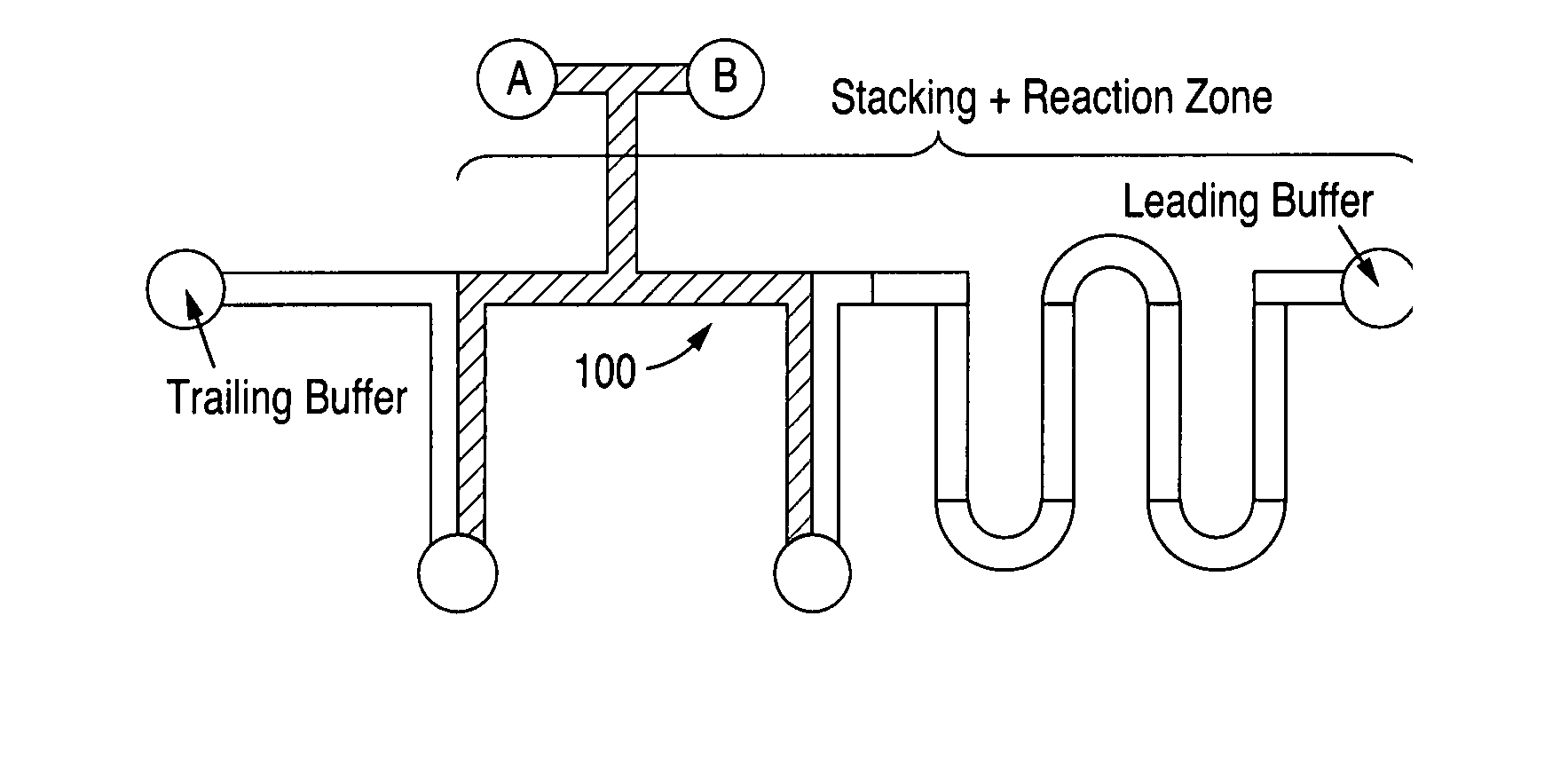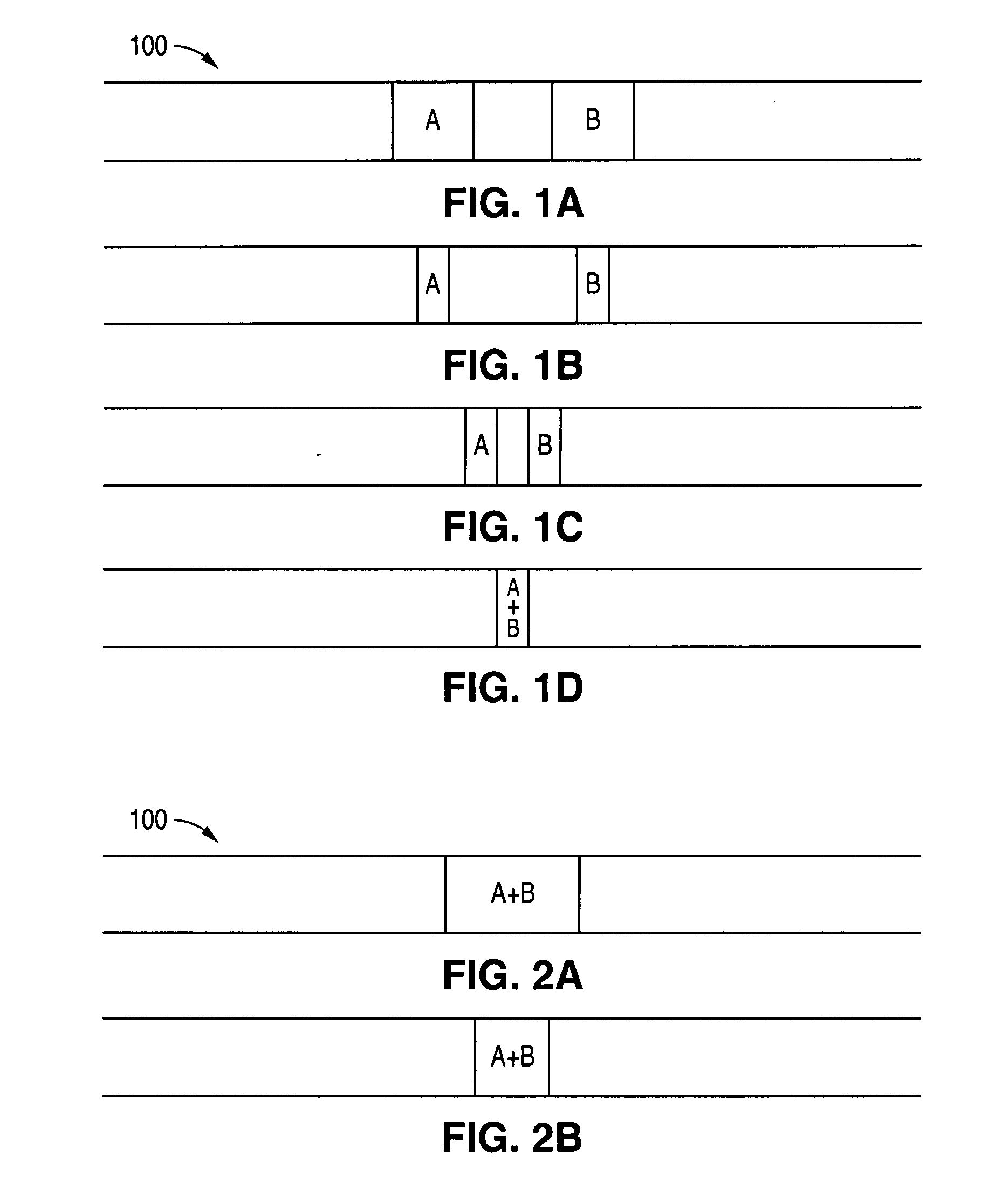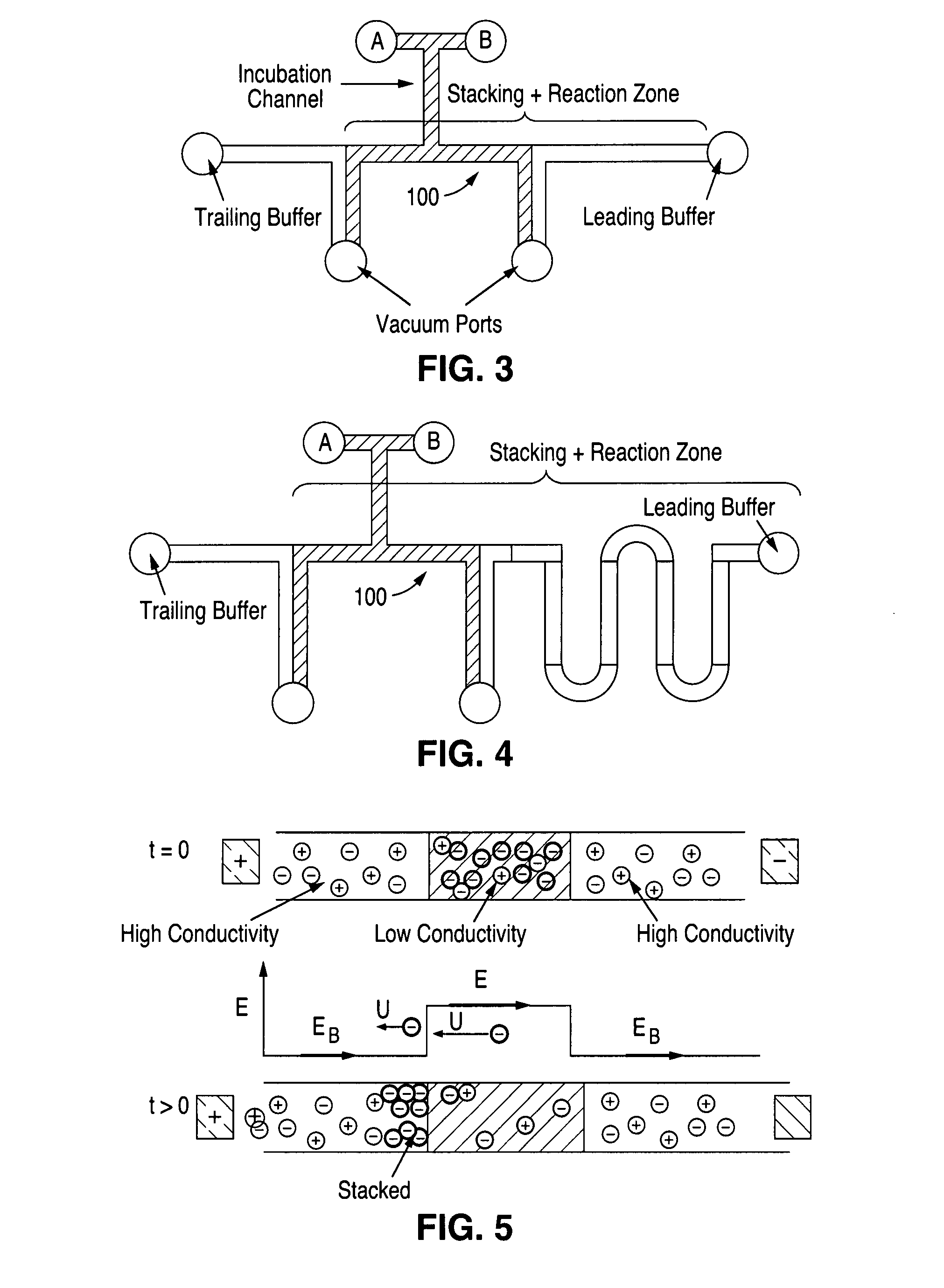Method for modifying the concentration of reactants in a microfluidic device
a microfluidic device and reactant technology, applied in the field of methods, can solve problems such as complex networks of intersecting channels
- Summary
- Abstract
- Description
- Claims
- Application Information
AI Technical Summary
Problems solved by technology
Method used
Image
Examples
example
Application to AFP Assay
[0038] Despite mixed opinions of its usefulness, ot-fetoprotein (AFP) remains the most useful tumor marker for screening patients for hepatocellular carcinoma (HCC) today. Commonly, HCC patients have AFP concentrations of 20 ng / mL or more in their blood serum. Furthermore, patients with AFP levels of greater than 400 ng / mL have a lower median survival rate. There are three glycoforms of AFP: AFP-L1, AFP-L2, and AFP-L3. The three forms differ in their ability to bind to lectin lens culinaris agglutin (LCA). Relative fractions of the AFP glycoforms may provide additional information serverity and prognosis of HCC. A relatively high percentage of AFP-L3 has been associated with biological malignancy and poor differentiation in clinical studies. Furthermore, it has been found that patients with positive AFP-L3 have poorer liver function and tumor histology.
[0039] Among the many methods available for detecting AFP in serum, the most commonly used methods include...
PUM
| Property | Measurement | Unit |
|---|---|---|
| Temperature | aaaaa | aaaaa |
| Concentration | aaaaa | aaaaa |
| Viscosity | aaaaa | aaaaa |
Abstract
Description
Claims
Application Information
 Login to View More
Login to View More - R&D
- Intellectual Property
- Life Sciences
- Materials
- Tech Scout
- Unparalleled Data Quality
- Higher Quality Content
- 60% Fewer Hallucinations
Browse by: Latest US Patents, China's latest patents, Technical Efficacy Thesaurus, Application Domain, Technology Topic, Popular Technical Reports.
© 2025 PatSnap. All rights reserved.Legal|Privacy policy|Modern Slavery Act Transparency Statement|Sitemap|About US| Contact US: help@patsnap.com



